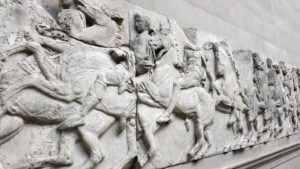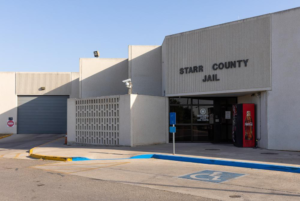The university dropped ‘legacy’ preferences for children of alumni while boosting financial aid and outreach
Brian Robinson waded into a crowd of first-year classmates on the quad at Johns Hopkins University, squeezing in amid a jumble of baseball hats, hijabs, neon curls and tattered knit caps. He cheered with the others as a drone buzzed overhead to record their formation spelling out “JHU 27.”
The 18-year-old from Houston, with ambitions of becoming a scientist and neurosurgeon, had wondered whether he would fit in at the private research university in Baltimore. He came from an urban public school where nearly all the students, like him, are Black. His family had pushed him to go to college close to home.
But on this August day of orientation, Robinson had no doubts. “I was definitely wrong about the campus,” Robinson said. “People here don’t care about what you look like.”
Robinson is one of many students of color who, in swelling numbers, have transformed Hopkins over the past decade and made it one of the most racially diverse universities in the top tier of higher education. Whether this school or others can sustain such trends, though, is an open question following a landmark Supreme Court decision that sharply curtails the role of race in admissions.
Johns Hopkins leaders say three key steps powered their demographic change: the elimination of “legacy” preferences in admission for children, grandchildren and siblings of alumni; a massive increase in financial aid for families in need; and more extensive recruiting in places where the university is not well known.
In 2013, 9 percent of incoming freshmen at Hopkins had “legacy” connections, the university said, and 18 percent identified as Black, Latino, American Indian, Native Alaskan or Native Hawaiian. By last fall the legacy share had plummeted to less than 2 percent while the percentage from the underrepresented racial and ethnic groups had soared to 34 percent. The White share of freshmen, meanwhile, sank to 17 percent in 2022. Federal data show it had been 46 percent a decade earlier.
The share of Hopkins freshmen who are Black, Latino or Native, according to federal data, now exceeds the share at many of its ultracompetitive peers in the Ivy League and elsewhere. That is a milestone for a university long seen as a largely White bastion of privilege in its majority-Black home city.
The demographic revolution at Hopkins makes it a prime case study following the Supreme Court’s decision in June to reject race-based affirmative action in college and university admissions. Higher education leaders fear the ruling could lead to lower Black and Latino enrollment at the most prestigious institutions. Legacy preferences at such schools, which historically have benefited the White and wealthy, have come under growing scrutiny.
Ronald J. Daniels, president of Johns Hopkins since 2009, has become one of the foremost critics of legacy preferences. He calls them “nakedly aristocratic” and “deeply antithetical to the ideals of the American Dream.” The university abolished the preference quietly in 2014. Pleased with the results, Hopkins announced its position on the issue in 2020. Daniels said the shift had “a significant effect” on the demographics of a university that now turns down more than 90 percent of its applicants. “It’s zero-sum,” Daniels said. “And, you know, the legacy pool was whiter and more affluent than the students who are at school today.”
But he acknowledged that it took far more to reshape admissions and enrollment. Outreach matters hugely. So does money.
In 2018, Hopkins received a gift of $1.8 billion from alumnus Mike Bloomberg — Class of 1964 — to make the university’s admissions “forever need-blind.” The gift shattered modern philanthropy records. Few colleges or universities can hope to land donations on that scale — especially donations targeting financial aid.
With the Bloomberg gift, Hopkins eliminated loans from financial aid offers, a major lure for students worried about debt. It also offered more and larger grants to students from a broader spectrum of the middle class.
The share of freshmen with enough financial need to qualify for federal Pell grants, 15 percent at the time of the Bloomberg gift, shot up to 22 percent last year. More economic diversity in the student body helped produce more racial diversity. Robinson, the son of a single mother who is a nurse, said the university met 100 percent of his financial need.
“Mike is a central part of this story,” Daniels said. But he noted that Bloomberg himself “was not a legacy admit.”
Daniels said he worries the court ruling could jeopardize progress on racial diversity. The university had joined others in urging the court to continue to allow race-conscious admissions. “It’s obviously going to reduce it,” he said. “We don’t know yet by how much. … It’s regrettable.”
Federal guidance shows how colleges may still address race in admissions
On the Baltimore campus, spirits were high as roughly 1,300 first-year students cheered and clapped Wednesday during the group photo. “Go Blue Jays!” they cried, invoking the mascot. “Go Hop!” They had dark skin and pale skin and every shade in between. They wore baggy cargo pants and jean shorts and pleated mini skirts and sneakers and Crocs and combat boots. One student wore a long white dress, trimmed with lace, next to another with a T-shirt that said “Cat person,” and another with knee socks pulled up.
Dua Hussain, 19, a sophomore, sat nearby on a patio outside a library. The daughter of immigrants from Pakistan, she grew up in Delaware, and her middle and high schools were predominantly White. “I was the only Pakistani, I was the only hijabi, and I was the only Shia Muslim,” she said. “I was the only one for seven long years, so that was really important to me, coming to any university — I needed to make sure it had a lot of different types of people.”
About a quarter of Hopkins undergraduates are Asian American, a share that has held steady in recent years. “Typically, when someone says Asian American, they don’t really mean my type of Asian American,” Hussain said. But she found active Muslim and South Asian and Pakistani student groups. And she found community in another important way.
“The first thing I remember thinking when I was on campus was, ‘Oh my God, there’s so many hijabis here.’ Every few minutes or so, I saw a new, different girl in a hijab. And I was like, ‘That’s crazy. It’s not the same person. It’s not the same one girl that I keep seeing over and over again.’”
In Delaware, Hussain had grown accustomed to explaining things. “Being at Hopkins, that was the first time I was like, ‘Wow, I don’t have to answer these questions all the time.’ People just knew.”
Dami Odubona, 18, a first-year student from a town near Newark, whose parents are Nigerian immigrants, had assumed Hopkins was predominantly White. She learned otherwise when she flew to Baltimore for a recruiting event for underrepresented students. “I just loved the vibe of the campus,” she said. She said she was struck by a performance to commemorate Indigenous Peoples’ Day, as well as resources for students of color such as the African Students Association.
“So I can talk to people about being Black in America overall,” Odubona said, “but then I can also talk to other students of African descent or from Africa.” She said she had recently met a student from Ghana and bonded with him about eating jollof.
These experiences are hardly unique to Hopkins. Prominent colleges and universities across the country have sought in recent years to bring multiracial, multicultural and global perspectives to their campuses. It is common for at least 10 percent of undergraduates on a campus to come from foreign countries. At Hopkins, 14 percent are international.
The Washington Post analyzed federal data on racial and ethnic enrollment patterns from 2010 to 2021 at more than 60 colleges and universities that admit 25 percent or fewer of their applicants.
At most of the schools, the share of freshmen from underrepresented minority populations — Black, Latino and Native — rose in that time. Johns Hopkins posted some of the steepest gains, climbing from 12 percent to 31 percent. Data from 2022 is not yet available nationally. But Hopkins said the underrepresented share reached 34 percent last fall (23 percent Latino, nearly 11 percent Black, and a small Native portion).
Only two schools among those analyzed had higher shares of underrepresented minorities for 2021 freshmen: the California Institute of Technology (34 percent) and Harvey Mudd College (32 percent). The shares were 27 percent at Columbia and Stanford universities, 25 percent at Cornell and Yale universities, 24 percent at the Massachusetts Institute of Technology and University of Chicago, 22 percent at Harvard University and 19 percent at Princeton University. These figures are conservative because they don’t count those the federal government classifies as multiracial or international.
Two questions are hovering over many of these schools: Can they sustain or even grow Black and Latino enrollment following the Supreme Court ruling? And will they continue to consider legacy status in admissions?
MIT and Caltech, like Hopkins, do not consider legacy. “We judge individuals by what they can do, not considering irrelevant factors,” said Stuart Schmill, dean of admissions at MIT.
Many prominent schools have declined recently to discuss their legacy policies. Dartmouth College is an exception. The Ivy League school in New Hampshire said it remains committed to building a diverse student body. Its share of underrepresented minorities among freshmen, according to federal data, was 18 percent in 2021.
“A legacy connection will continue to be one factor among dozens that Dartmouth considers when evaluating applicants,” Dartmouth told The Post in a statement. “Those categories include academic performance, qualitative information from essays and recommendations, extracurricular engagement, geography, and academic interests, among others. Dartmouth is grateful to have an increasingly diverse alumni body that makes for an increasingly diverse group of legacy applicants.”
The issues colleges face in admissions after the Supreme Court ruling go far beyond how to handle applications from children of alumni. “We’re putting outsized attention on legacy,” said Wil Del Pilar, senior vice president of the Education Trust, an advocate for disadvantaged students. He does not dismiss the symbolic significance of a college abolishing legacy preference. But Del Pilar said many other inequities — financial, academic and more — play a major role in whether a student applies to a top college, gets in and enrolls.
“Institutions are going to have to be very intentional about how they rethink their admissions processes,” he said. “What do we value in admissions, and what are we willing to reconsider in light of this decision?” Financial aid is a game changer. So is outreach to previously overlooked high schools. “Institutions need to change where they recruit,” he said, “so students view themselves as worthy.”
For Brian Robinson, one thing that helped keep Hopkins at the front of his mind was a composition notebook the university sent him in a promotional mailing. Writing in it for his Advanced Placement calculus class, Robinson wondered what it would be like to go there.
As the top student at his school, he could have applied to the public University of Texas or private Rice University in Houston. But he decided to apply early to Hopkins, mindful of the reputation of its medical school, its MD/PhD track and a program designed to support students underrepresented in medical professions.
When decisions were released in December, Robinson was working at Walgreens as a pharmacy technician and didn’t want to check the result until he got home. That night he opened his laptop, saw confetti explode on the screen, and screamed. Then he FaceTimed his mom, who was on a hospital shift, he said, “and she just cried and cried.”
On campus last week, opening his Class of 2027 welcome box, he smiled.
“I really love that it exposes me to different cultures and perspectives that I wouldn’t have even dreamed about back in Houston,” Robinson said. “Hopkins is really going to be a home.”
Legacy admissions at colleges and universities




